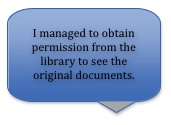Collocations Lesson – How to Teach
In my previous article for EFLmagazine.com, Taking a Chunk out of Vocabulary: Using Collocations (2015), I examined what collocation is and the benefits of teaching it and how to teach collocations in the classroom. In this follow-up article, I aim to explore what makes collocations so special (and so important!) and I will give you some examples that show how you can weave them into your lessons. The overall goal of this article is to understand that using collocations can brighten your vocabulary lessons and excite your students. Additionally, it is important for learners to understand the purpose of a particular target language or function. Finally, this article will discuss three sections of collocation: adjectives and nouns; phrasal verbs; and collocations for success, and I have included two engaging tasks that you can incorporate into your own classrooms.
Collocation says what?
As we all speak our mother tongue or any learned language, we constantly use a plethora of sounds, words, phrases, exclamations, and questions that flow from our busy little minds and into the imaginations of others. Native speakers of any language use strings of naturally occurring text that feel natural and just right. For example, we say: I’ll do the housework. instead of, I’ll make the housework. The second utterance is understandable for it gets the meaning across; however, there lies a slightly uncomfortable feeling in native-English speakers which reveals that something just isn’t right about the statement. Moreover, when teachers acknowledge this apparent error to their students, it subsequently prompts confusion in learners and they wonder: Why isn’t that right? You understand me, so what’s the problem? As teachers, we cannot ignore these reactions.
These naturally occurring strings of texts are also known as collocations. Within these frequently used groups of words, the specific choice of one word conditions the choice of the next, and the next again. Furthermore, the meaning of words chosen together is different from their independent meanings. For example, peace of mind refers to the absence of mental stress or a feeling of tranquility and/or relief; conversely, peace / of / mind read as individual components denote an illogical jumble of words. Therefore, it is so important for teachers to realize the significant role that word chunks vs. individual words play in vocabulary teaching and learning. Specifically, learners need to be made aware of special word chunks. Moreover, they need to see that these unique combinations of words demonstrate meaning as an entirety, rather than their individual meanings which, put together, fail to create the same connotation.
Give Learners a Reason
In most situations, adult students, whether preparing for post-secondary education in an English-speaking country or studying to meet the language requirements for a new job, prefer and need to know why they are learning what their language teacher has prepared. Teachings in grammar are usually accepted immediately, although perhaps they are not always cheerfully welcomed, as learners know their importance and necessity in building language proficiency. Weaving collocation practice into your lesson plans is slightly trickier.
The challenge, therefore, is to demonstrate to students that this untraditional way of teaching vocabulary is effective and wonderfully useful. Learners will soon understand that collocation is not a scary grammatical concept, as they may first perceive it, but rather that it is a glimmering lexical avenue for them to explore and speak more natural English. As a result, students become more open to and later accept this teaching concept and method that they may have otherwise been less inclined to instill into their everyday vocabulary learning strategies.
Let’s look at a few types of specific collocations that you can easily incorporate into your lesson plans.
Adjectives and Nouns
Adjectives and nouns are among the first collocations students learn because they help to make precise descriptions. As learners improve their English skills, these special collocations allow them to describe things in interesting and varied ways. For example, compare:
| Random Word Selections | Collocations |
| growing romance | budding romance |
| a lot of snow | heavy snow |
| big extent | full extent |
To L1 speakers (first language speakers) of English, the right column feels natural and comfortable, whereas the left column gives that feeling of: I know what you’re trying to say, but let’s just change something to make it sound right. If we examine the collocations, we can see that the adjectives (budding, heavy, and full) are not adding any distinct and clear unit of meaning, but it is simply underlining part of the meaning of the noun.
Phrasal Verbs
Here is a friendly reminder of a phrasal verb:
they are idiomatic phrases or phrases that consist of a
verb with a preposition or an adverb (or both), the meaning
of which is different from the meaning of its separate parts.
Examples include, pay for, work out, and make up for.
For these kinds of collocations, learners need to learn the verb, the particle(s), and then appropriate noun to make a clean, complete combination.
Below is an exercise* you can use with your learners to introduce phrasal verbs that are connected to people’s emotions:
Match the collocations 1-8 with the meanings a-h
| 1. pour your heart out | a. to make yourself eager to do something |
| 2. burst out laughing | b. to suddenly start laughing |
| 3. pluck up the courage | c. to make yourself brave enough to do something |
| 4. bottle up your feelings | d. to still think that something good might be true |
| 5. burst into tears | e. to not tell anyone about your emotions |
| 6. go to pieces | f. to suddenly start laughing |
| 7. work up the enthusiasm | g. to tell someone all your problems and feelings |
| 8. hold out hope | h. to be so upset that you cannot deal with life |
Collocations Lesson for Success
When I ask my college students what their short and long-range goals are, I always hear: I want to be successful! This exclamation prompts me to question what success means to them and furthermore, how they aim to achieve it. Since we talk about success on a daily basis, it is important for English language learners to have the right tools to express themselves accurately and naturally when using language in contexts such as work and careers, sports, or achieving personal goals.
Students should be introduced to and reminded of the importance of context when learning English. They understand this concept without issues when using their mother tongue, but as they take more of a command with the English language, they sometimes forget that context is just as important to acknowledge and understand as the words and sentences they put into use.
Below is a great activity* you can give your students. The task requires learners to put sentences of success into context by matching the utterance to their appropriate speaker. This two-pronged activity allows students to: identify and then understand the collocation by seeing it demonstrated in a particular context. Subsequently, learners are able to retain the information and meaning better and more quickly since remembering frequently used chunks of language is easier than individual morphemes.
Task: Match the sentences 1-8 to the speakers a-h.


![]()

| a. a parent | b. a politician |
| c. a jogger | d. a student |
| e. a supporter of a football team | f. an author |
| g. a police officer | h. the chief executive officer (CEO) of a company |
May Collocations Live On and On
The most beautiful thing about collocations is the extraordinary number of them that exist, allow human beings to express themselves naturally, effectively, and accurately with others. The main concept for learners to realize is that vocabulary learning consists of more than endless lists of words and their definitions. It is our job as language teachers to put forth and encourage this notion. Moreover, students will benefit from learning that words enter into meaningful relations with other words around them which creates new meaning as a whole. Also, it is important to note that strings of frequently used words are special and not random, and such information is imperative to bestow upon our ESL/EFL learners. Unique chunks of language such as adjectives and nouns and phrasal verbs are extremely useful and important for learners to communicate on a decidedly more advanced level. It is my hope that you will make room in your lesson plans to incorporate collocation teaching and learning, and may you and your students relish in their boundless splendor.
* Exercise borrowed from: Walter, E. and Kate Woodford. (2010). Using Collocations for Natural English. Surrey: Delta Publishing.
Sinclair, J. (1991). Corpus, Concordance, Collocation. Oxford: Oxford Universtiy Press.
Sinclair, J. (2004). Trust the Text. Cambridge: Routledge.
Walter, E. and Kate Woodford. (2010). Using Collocations for Natural English. Surrey: Delta Publishing.[/jbox]









